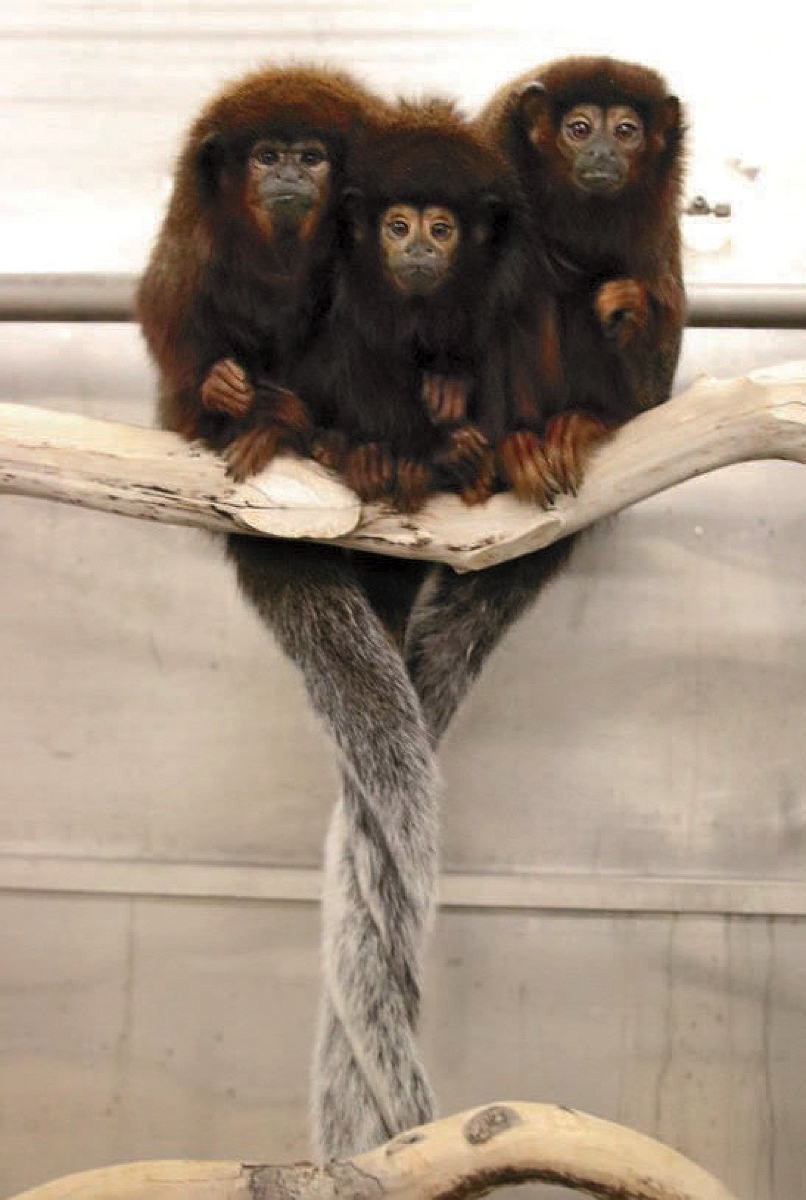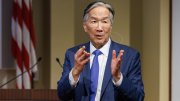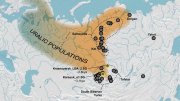Dads are everywhere in our society. They are fundamental to many families and make excellent fodder for humor—I love Dad jokes. But becoming a biological father and “fathering” are two distinct undertakings. Paternal investment, when fathers provide significant care and attention to offspring, is evident in many species of birds, fish, and even insects. But such male behavior is rare in mammals, particularly in great apes such as ourselves. Humans are commonly distinguished from other primates and animals by several unique traits—habitually walking upright, using language, and possessing big fancy brains—but the propensity of human males to engage in offspring care is arguably equally unique. Human fathers can and do make a difference in the survival and well-being of their offspring (although they can sometimes have the opposite effect). Complex and unique though human fatherhood is, evolutionary biology can provide some clarity.
Evolutionary biologists and anthropologists have focused on human paternal care only within the past few decades. Scientific research into offspring care, particularly in evolutionary biology and neuroendocrinology, has historically focused on females and maternal care. In Father Time: A Natural History of Men and Babies, Sarah Hrdy, professor of anthropology emerita at University of California, Davis, addresses this gap and does a deep dive into human father research. Informed by her own research and personal experiences, she applies biological, evolutionary, theoretical, ethnographic, and comparative perspectives to bring clarity to the conversation on the emergence and prevalence of paternal investment in humans. The result is a rich journey for the reader that not only provides a greater understanding of the evolution of fatherhood but also demonstrates how positionality (the researcher’s personal experiences) can spawn new perspectives and insights.
Hrdy, ’68, Ph.D. ’75, S.D. ’09, an internationally recognized scholar of primatology and evolutionary anthropology, is also well known for her acclaimed books that span topics from the evolution of infanticide in non-human primates (The Langurs of Abu) to the role of women during human evolution (The Woman That Never Evolved). Her Mother Nature explores the question of maternity in humans and how it can diverge from our common perceptions of motherhood. To readers’ benefit, Hrdy does not shy away from difficult and complex questions; she has the experience, knowledge, and deep understanding of science to shed new light on fatherhood in humans.
As someone who has conducted research on the evolutionary biology of human males for many years, I am very familiar with the pertinent anthropological science on fatherhood. Previous books, particularly Fatherhood: Evolution and Human Paternal Behavior, by Peter Gray, Ph.D. ’03, and Kermyt Anderson, laid the initial groundwork. Amazing and rich as that book is, Father Time provides Hrdy’s distinct and unique interpretation of the data and her personal research journey—and her writing is a joy to read. The scientifically minded reader will revel in the inner workings of neuroendocrinology and research methods, while those less engaged with science will appreciate Hrdy’s clear explanations drawn from her experiences and ethnographic examples.
Her experiences as a woman scientist in a field that was (and in many ways still is) male-dominated illustrate how different perspectives can yield novel insights and a new level of understanding in what may have been thought of as “well established knowledge.” Equally, Hrdy’s collaborations and conversations with anthropologists, neurobiologists, and psychologists tell the tale of how new scientific viewpoints and theories can emerge from interdisciplinary exchanges and serendipitous conversations—such is the joy of science.
The results inform not only how to understand the science, but also how science should be done—especially concerning questions of who we are as a species. It is uncommon in the literature to read about the scientist-author taking saliva samples from a spouse to measure oxytocin levels after the birth of a grandchild, yet that example brings neuroendocrinology, grandparenting, and field science to the reader’s doorstep. From collecting hormone samples on a New York City street, to heart-wrenching scenes in a walnut grove, Hrdy inserts just the right anecdotes and examples to bring her arguments and narrative to life, even as the science remains center stage.
Much of Father Time is based on the well-supported proposal that the evolution of paternal investment did not require a wholesale suite of novel genetic mutations. Drawing upon contemporary understanding of genetics, Hrdy outlines how genes are not mere on/off switches, but a collection of dials, tuned to respond flexibly to environmental and social challenges. Accordingly, paternal behavior in humans and other organisms may engage the biological template that already exists and is deployed in females. Given the importance of offspring care under many conditions, she makes the compelling argument that paternal care is the result of neuroendocrine responses rooted in a common genetic template shared by males and females across species—a case supported by comparative and evolutionary evidence.

A primatologist by training, Hrdy is well accustomed to invoking comparative biology. In Father Time, she does this and then some, presenting examples of fatherhood and paternal investment from primates, birds, fish, and insects. From the social lives of South American owl monkeys to the many varieties of voles to bark lice, she demonstrates how paternal investment can emerge from what seem to be ancient dormant genetic templates that are rekindled under the right conditions. The reader will be especially drawn to the wonderful world of callitrichids, small South American monkeys in which females commonly mate with multiple males and gestate two big twin infants (each about 20 percent of maternal body weight!). How is this done? These mighty small monkeys do so with the significant help of fathers (plural) who carry, feed, and perhaps even teach infants. Why fathers plural? I’ll leave it to Hrdy to explain—but let’s just say there are many wonderful and unusual biological pathways to being a father. Darwinian natural selection and evolution can yield remarkable solutions to many challenges.
A particularly interesting theme is the flexibility of human neural responses to babies and young children. It is no surprise to read that the brain is among the most flexible organs in the body, one that offers tremendous benefits for dealing with life’s problems. Hrdy makes the compelling argument that the basic neural templates that support paternal care are likely to have been derived from the same neural processes that maintain maternal care. It is well established that human females exhibit specific neurological and neuroendocrine responses to holding and engaging with infants. As Hrdy discusses, the same responses are evident in males, given the proper stimulus—such as exposure to infants. In many ways, the infant is in the driver’s seat, coaxing males to engage in care through their cries, scents, and cuteness.
Hrdy presents evidence from rodent males, which are commonly infanticidal; with proper exposure, the same males become caregivers with neurological responses similar to mothers’. Evidence from humans indicates similar processes: in essence, human males are inherently predisposed to be doting fathers once they are exposed to the appropriate infant and child stimuli. Hrdy argues that this may have evolved from the need for males to maintain proximity to females to increase their chances of mating—which had the side effect of exposing males to their offspring. With opportunity come benefits.
Of course, there are also less warm-and-fuzzy aspects of male behavior. Drawing on experiences on planes and exploring the inner frustrations of a hypothetical businessman irritated by the cries of an inconsolable infant on a flight to Chicago, Hrdy discusses evidence that hormones such as testosterone can be a potent irritant. The hormonal transition from cranky and potentially dangerous male to caring father can be a bumpy ride for multiple species. She delves into the power of tears, HEX scents, and auditory cues such as “baby” cries from various species to illustrate the broad spectrum and mutability of fatherly behaviors in humans and other mammals—from intimate and nurturing to threatening.
Infanticide, the antithesis of paternal care, can quicken the availability of females to mate: having an infant at their breast drives down females’ reproductive hormones that would ordinarily stimulate mating behavior and the ability to conceive. Hrdy’s balanced, sober presentation of examples from gorillas and other primates illustrates this darker side of fatherhood. The line between male gorillas that are infanticidal and those that are not, it turns out, is thin.
Delving into the world of our closest evolutionary relatives, chimpanzees and bonobos, Hrdy explicates these two African great ape species’ very different social organizations, particularly concerning hierarchy and sex roles. Despite their genetic similarity, chimpanzees are philopatric, with males being the dominant sex, but bonobos are governed by females, which put a priority on infant care. She makes a compelling argument that paternal care in some primates evolved from an initial need to protect females from other males: proximity to protect mating opportunities is compelling. Anthropologists will continue to argue about the origin of paternal investment in humans and other primates, but all readers will learn much from Hrdy’s excellent body of research.
Turning to our hominid ancestors, Hrdy highlights the selection factors that may have produced the social traits we see today—most importantly, how infants and children may have shaped the adults around them, including males who evolved to be the fathers we see, too. It is challenging to discuss ancestral behavioral traits since behavior does not fossilize. Nonetheless, she argues that social and ecological factors that bring males and females together can facilitate paternal investment, awakening the inner nurturer.
Pivoting to contemporary humans, the role of hunting skill and reputation in the evolution of paternal investment is an important part of her narrative. Father Time draws on contemporary research from African and South American hunter/gatherer groups to argue that reputation for hunting prowess and the value of meat were important for the evolution of paternal care and of human sociality generally, including care of offspring. However, Hrdy adds that the more consistent supply of calories provided by women was also quite important. It is a wonderful chapter that not only draws on the work of eminent anthropologists such as Dr. Kristen Hawkes and her extensive research among the Hadza of Tanzania, but also illustrates how anthropology incorporates biological, cultural, and ecological research.
Arriving at the present, other cultural practices associated with paternity—including definitions of fathers, their roles, and what is known as partible (shared) paternity—enter the conversation. Hrdy addresses the cultural norm, common in many indigenous Amazonian peoples, of identifying several men as the father of a single child, and the question of paternity misassignment: extra-pair liaisons that result in a child conceived by someone other than the partner/husband. Among the Himba people of Namibia, almost half of children are conceived by men other than the one deemed to be the true father. While these extra-pair arrangements were tolerated and seemed to facilitate greater care and group cohesion when the Himba were full-time foragers, their shift to cattle and goat herding, along with the growth of patrilineal descendance of wealth, appear to make this untenable in the future. Such examples, which enrich Hrdy’s narrative, also demonstrate the importance of cultural studies informing biology, and vice versa.
Concluding her book, Hrdy considers the implications of new reproductive technologies, challenges to the re-emergence of patriarchal systems, and how science can inform our understanding of the ways in which these novelties will affect future generations. Although scholars in the field may contest a few of her interpretations, Father Time’s strengths far outweigh any weaknesses, and any debates will likely fall within the bounds of common academic banter. This is a remarkable book, filled with detailed scientific information, expert interpretations of the data, and a brilliant narrative voice. Anyone with a father should read this book—especially those interested in how we humans, with lots of help from mothers and infants, became so good at fathering.









